In September 2020, the skies in Oregon turned crimson as dozens of wildfires scorched forests in the Cascade Mountains. In just three days, the blazes engulfed nearly 4,000 square kilometres — more than had burnt in Oregon during the previous 36 years combined.
For two weeks, the acrid air held residents hostage in their homes. The Oregon Health Authority documented a 38% increase in respiratory-related visits to hospital emergency departments during September 2020, compared with the previous month. It was “the worst two-week period I’ve ever experienced for air pollution anywhere — including India, China and Bangladesh”, says Perry Hystad at Oregon State University in Corvallis, who studies the health impacts of the worst air pollution worldwide.
One stark sign of the dangers could be seen in the air quality index (AQI) — a measure of particulate matter pollution (PM), ozone, carbon monoxide, sulfur dioxide and nitrogen dioxide. The US AQI scale runs from 0 to 500, and values more than 300 are considered hazardous to everybody. For two weeks in mid-September, during the most intense burning across Washington state, Oregon and California, the AQI was at 300 and above. The air monitors closest to the fires were shut off or knocked out. On the worst day, southeast of Salem, Oregon, the AQI surged past the scale’s limit; extrapolations by the Oregon Department of Environmental Quality estimate that it would have reached 642.
“These are AQI values that were unheard of” in the region until the past five years, says Dan Jaffe, an atmospheric chemist at the University of Washington in Seattle. Fine particulate pollution reached levels between 4 and 11 times the National Ambient Air Quality Standards (NAAQS) limit set by the US Environmental Protection Agency (EPA). And it didn’t stay in the West; the pollution travelled all the way to New England on the US east coast.
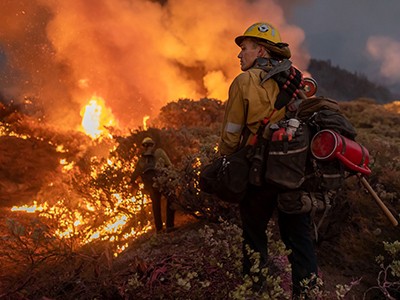
How record wildfires are harming human health
Air quality in the western United States has grown markedly worse in the past decade — owing largely to wildfires that are getting bigger and more frequent with the warming climate. In 2020, more than four million hectares burnt in the United States, the second-highest amount since national records began in 1983. During summer 2020, western wildfires accounted for nearly one-quarter of the PM from particles less than 2.5 micrometres in diameter (PM2.5) in the contiguous United States1.
The problem is getting worse across the world. Globally, the number of extreme wildfires is expected to increase by 14% by 2030 and by up to 30% by the end of 2050, according to a February report2 by the United Nations Environment Programme. And exposure to ambient fine particulate matter, which is rising globally, is estimated to kill up to ten million people a year3.
The trends in the western United States stand out because they mark a sharp change in air-pollution levels. The country has some of the strongest environmental regulations in the world, and has made significant progress cleaning its skies since the 1970s. Regulations such as the Clean Air Act drastically cut levels of air pollution — including lead, sulfur dioxide, nitrogen dioxide, ozone and fine particles — from vehicles, power plants, factories and other sources. But the air-quality success story has been swamped in the past decade by staggering environmental shifts due to a warming climate.
Beyond spurring forest fires, climate change has also made the region more susceptible to droughts that dry out soils and expose lake beds, leading to vast plumes of airborne dust. Adding to the problem are emissions from agriculture, transportation and fossil-fuel development in California and the southwestern states, which lead to high levels of ground-level ozone and other types of pollution. Some 40% of Americans — more than 137 million people, mostly in the West — are living in places that have unhealthy levels of particle pollution or ozone, according to the American Lung Association’s State of the Air 2022 report.
The changes are putting tens of millions of people at risk — not only in the western states, but across the country. “The Clean Air Act was not designed for today’s sources of pollution,” says Marshall Burke, an Earth-systems scientist at Stanford University in California. Amid all these changes, researchers are struggling to find ways to tackle the West’s harmful air.
Bad gas
Table of Contents
As night falls over Carlsbad Caverns National Park in remote southern New Mexico, scattered lights twinkle in the inky darkness. It looks almost like an illuminated city, but the sparkles are actually hundreds of burning methane vents at oil drilling sites in the roughly 200,000 square kilometres of the Permian Basin, which stretches from southeastern New Mexico to western Texas. Petroleum companies find it cheaper to release and burn the methane from oil production rather than capture it. The vents also spew out particulate pollution and volatile organic compounds, which add to the ozone problem across the basin.
Welcome to the busiest oilfield in the United States: the Permian Basin accounts for more than 40% of US oil production. And with energy prices soaring in the past year, it is getting even busier. Oil production in that region was predicted to hit a record high in November, because US oil companies have drastically increased drilling in the past year. This means a huge surge in pollution from oil production, including the potent greenhouse gas methane, much of which escapes into the skies.
This is bad news for the region’s air quality. Ozone measurements at Carlsbad Caverns National Park, for example, exceeded the EPA’s ambient air-quality standards on 9 days in 2020 and 14 days last year. The EPA is now threatening to classify the Permian Basin as a non-attainment zone for ozone, meaning that it does not meet the NAAQS. This could hamper existing oil and gas operations and delay new development, even as the world clamours for more fossil fuels.
Climate change seems to be compounding the problems throughout the Southwest, including the Permian Basin. The region has been experiencing a 22-year megadrought, and is drier now than during any comparable period in the past 1,200 years. This year, California had the driest January, February and March since records began a century ago.
The dry conditions are driving more air pollution. Higher temperatures and reduced precipitation are causing lakes such as Utah’s Great Salt Lake and California’s Salton Sea to evaporate, exposing sediments to wind erosion. Between the 1990s and 2000s, the number of large dust storms increased by 240% in the United States4.
And the climate trends have fuelled explosive fire behaviour. “Wildfires are the front line of climate-change impact on air quality,” says Paul Billings, national senior vice-president for public policy at the American Lung Association in Washington DC. “We are seeing more hazardous, very unhealthy air days than we’ve seen in 20-plus years of doing the State of the Air report,” he says.
The impacts are clear in measurements of PM2.5 — the smallest particulate matter. After declining for many years in the Northwest, PM2.5 readings have been climbing since 2016 (see ‘Up in smoke’). The 2020 average of 11.9 µg m–3 is just below the US standard of 12 µg m–3, which the EPA is considering tightening. The average is also well above current guidelines from the World Health Organization (WHO), which lowered its PM2.5 guidelines in September 2021, advocating that levels should not exceed 5 µg m–3. That change, the organization says, is designed to save millions of lives.
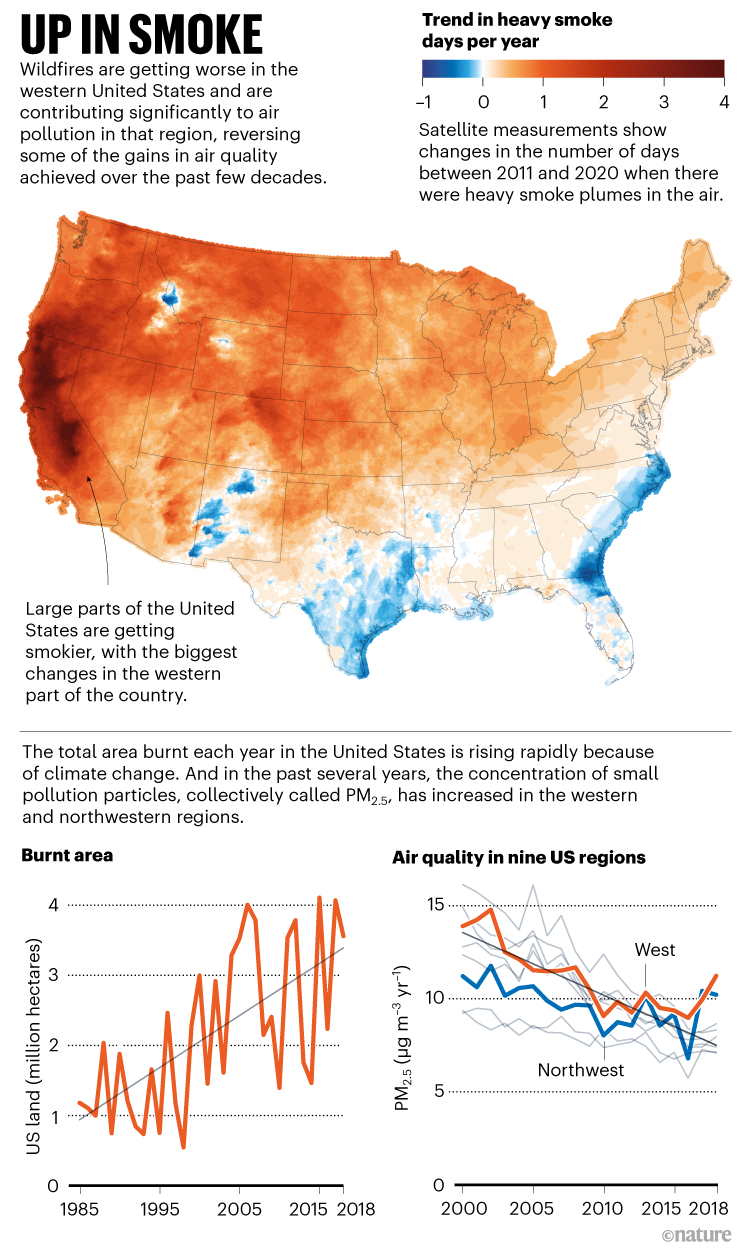
Sources: Map: M. Burke et al. Nature Hum. Behav. 6, 1351–1361 (2022); Charts: M. Burke et al. Proc. Natl Acad. Sci. USA 118, e2011048118 (2021).
Source of the problem
Researchers say that laws intended to combat air pollution don’t address increasingly important sources, such as wildfires and dust. In fact, the EPA created an exemption for the increased air pollution that occurs during wildfires, dust storms and similar events considered to be ‘natural’. The agency’s ‘exceptional events rule’, adopted in 2007, excludes days when such events happen from consideration by regulators.
Since that rule came into force, Arizona’s Maricopa County — home to the city of Phoenix — has used the exceptional events rule to significantly reduce the number of days the county failed to keep below pollution limits for PM10 (particles below 10 micrometres in diameter). During 2011, for example, Maricopa County applied for 20 exceptions for exceeding PM10 levels — 8 of which were in July alone5.
By pruning outliers deemed ‘natural exceptions’, the regulatory data set is skewed, says Katie Clifford, author of a paper this year that called the practice into question5. “The problem is with how we are using the Clean Air Act,” she says. It is built to respond to air-quality issues caused by rule violations, so removing data reduces regulatory oversight, adds Clifford, a human geographer at the University of Colorado Boulder.
It is unlikely that the federal or state governments will choose to rein in some of these sources of industrial and agricultural pollution through stronger regulations, say researchers. But even if they did adopt regulations, the rules won’t help much against droughts, dust storms and wildfires.
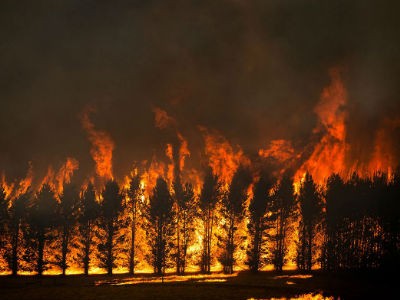
The race to decipher how climate change influenced Australia’s record fires
“We did a lot of work in California to decrease air pollution, but with the wildfires, we unfortunately have not gained ground yet,” says Kari Nadeau, a physician-scientist focused on environmental exposures and health at Stanford University School of Medicine. And it’s certain to get worse.
“Across the West, we are going to have higher average smoke levels as well as pulses of really extreme exposures,” says Burke.
One positive point is that it’s becoming easier to track air pollution. “The tools are getting much better now,” says Nadeau. These range from low-cost, personal air-quality monitors to sensors in orbit. NASA is planning to launch two satellite instruments devoted to air-quality monitoring. In 2023, a sensor called TEMPO (Tropospheric Emissions: Monitoring of Pollution) will provide hourly tracking of aerosols such as dust and smoke, as well as pollutants such as ozone, nitrogen dioxide and formaldehyde, across North America. And the Multi-Angle Imager for Aerosols (MAIA) instrument will map various types of airborne particulate matter and allow researchers to assess how they correlate with health problems, such as adverse birth outcomes and premature deaths from cardiovascular and respiratory disease.
Inhaled impacts
The health effects of air pollution can be severe. Studies of wildfire smoke over the past decade have linked exposure to higher numbers of hospital visits for respiratory problems, worsening of asthma, and increased cases of chronic obstructive pulmonary disease6. A study published this year tracked 2 million people in Canada over roughly 20 years, and found that those exposed to a wildfire within 50 kilometres of their home in the past 10 years had a roughly 5% higher incidence of lung cancer and a 10% higher incidence of brain tumours, compared with people who weren’t exposed7.
Air pollution often hits hardest for vulnerable populations, such as older people, children, poorer individuals and those with underlying conditions. Burke and his colleagues estimate8 that an increase of 10 µg m–3 in local annual mean PM2.5 concentrations causes a 9% increase in infant mortality in sub-Saharan Africa, and that PM2.5 concentrations above minimum exposure levels resulted in 449,000 additional infant deaths there in 2015.
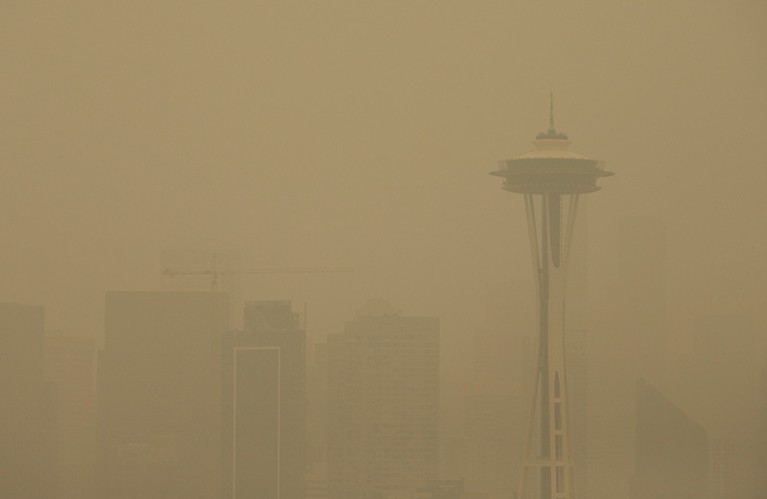
Smoke from wildfires obscure the Space Needle and the Seattle skyline in Seattle, Washington, in 2020.Credit: Lindsey Wasson/Getty
Globally, more than 90% of the world’s children are exposed to elevated PM2.5, resulting in over 600,000 paediatric deaths in 2016, according to a 2018 report by the World Health Organization.
And although the majority of large landscape fires in the United States occur in the West, the smoke’s impacts don’t stay there. “Smoke in the eastern US, coming from both local fires and wildfires in the West, leads to more deaths,” says Katelyn O’Dell, an atmospheric scientist at George Washington University in Washington DC. She and her colleagues found that some three-quarters of deaths attributable to smoke PM2.5 in the United States occur in the east, owing to the region’s high population densities9.
Growing evidence suggests that wildfire smoke is even more hazardous than conventional sources of PM2.5. The leading hypothesis is that today’s wildfire smoke is more frequently tainted with the incinerated remnants of modern homes. “Smoke is not just from trees anymore,” says Nadeau.
Although smoke can travel across the country, dust and oil sources of PM2.5 typically stick closer to home. Agricultural activities can cause peaks during spring and autumn, coinciding with planting and harvesting, whereas ozone values typically rise in summer, mostly because of increases in sunlight, temperature and emissions of precursor compounds. And researchers are uncovering other health impacts from dust — for example, potential links to infectious diseases, such as Valley fever. “There is a misperception that dust is harmless dirt, rather than a delivery mechanism for a wide range of toxics, metals and faecal matter,” says Billings.
Researchers say an assessment of the cumulative health impacts from all air-pollutant sources is needed, for example, to set new policies, particularly for people who can’t avoid exposure, such as outdoor labourers. A January study of more than 15 million US Medicare recipients in major oil and gas fracking areas found that those who lived closest to wells had a 2.5% higher risk of mortality, a value that was statistically significant10. Another study11 estimated that, by 2025, the oil and gas sector alone will be responsible for 970 ozone-related premature deaths and 1,000 PM2.5-related deaths nationwide — as well as thousands of hospital visits and more than one million cases of exacerbated asthma and acute respiratory symptoms.
To get better data, Nadeau has begun a project funded by the US National Institutes of Health to study the long-term impacts of particulate matter on the heart, lungs and immune system across all ages, focusing on vulnerable communities.
Windows of opportunity
In the fight against forest fires, western states are battling not only climate change, but also their own history. For most of the past 150 years, government policies emphasized suppressing all fires, which led to a large build-up of dead wood and flammable vegetation in forests. In the past few decades, forest managers have tried to reduce that fuel load by conducting controlled, or prescribed, burns during times of year when there is less chance of fires burning out of control.
But this is getting harder as the climate changes. “Our windows of opportunity to do prescribed fire safely have shrunk considerably,” says Colleen Reid, an environmental health researcher at the University of Colorado at Boulder.
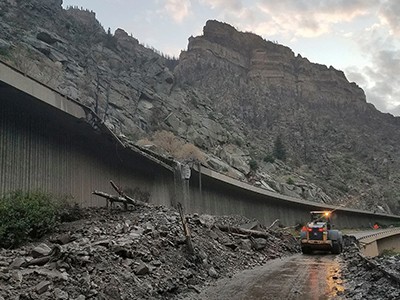
The devastating mudslides that follow forest fires
Sometimes those windows slam shut abruptly. In April, a prescribed burn in New Mexico grew uncontrollably into a megafire that burnt more than 137,000 hectares. Researchers fear that this kind of disaster reduces the public’s appetite for prescribed burns, even though such events are rare.
“There are thousands of prescribed burns safely conducted each year,” says James Biggs, a fire ecologist at New Mexico Highlands University in Albuquerque. These kinds of controlled burn can yield extra benefits, such as reducing the spread of invasive species.
Concerns over prescribed burns have grown so strong that a sheriff in eastern Oregon arrested a US Forest Service employee this year for starting a fuel-thinning fire that reportedly damaged some private property. Even with these tensions, states are trying to make progress. In 2020, California signed a memorandum of understanding with the US Forest Service in which each entity is supposed to treat roughly 200,000 hectares per year by 2025 — largely through prescribed burns or by removing biomass mechanically. But they have fallen far behind, partly because conditions have been drier than normal. The state has treated almost 21,000 hectares with prescribed fire since the agreement was signed in mid-2020. The US Forest Service, meanwhile, has burnt a total of roughly 32,000 hectares and has mechanically removed biomass in more than 68,000 hectares.
Many factors are slowing progress, including liability concerns, deficits in funding and training, and having to deal with a large number of small private landowners, which complicates extensive burns, says Rebecca Miller, a wildfire policy researcher at the University of Southern California in Los Angeles.
Another issue is how states count carbon emissions, says Miller. Wildfire emissions will complicate California’s efforts to achieve its goal of carbon neutrality by 2045. The California Air Resources Board (CARB) estimates that the 2020 wildfire season generated 112 million tonnes of carbon dioxide emissions. “CARB tracks carbon emissions from both prescribed fire and wildfires, and will continue to use that information while ascertaining the state’s progress towards the goal of net zero by 2045,” says Amy MacPherson, CARB’s public information officer in Sacramento.
Because any forest-thinning or prescribed-fire efforts will take decades, a number of researchers are developing and testing ways to keep people safe when wildfires explode. Jaffe was one of the first to confirm that a low-cost, home air-purifying device — a filter attached to a box fan — was highly efficient. During the thick of the September 2020 fires, he promoted the method in numerous media interviews and subsequently published the design.
Hystad took matters into his own hands during the 2020 wildfire in Oregon. He closed all the windows in his home, ran the air conditioning with vents closed to recycle the air through filters, and used a single portable HEPA filter to clean the indoor air. Still, indoor PM2.5 levels hovered at hazardous levels of 200–300 µg m–3. “The most I could reduce indoor concentrations was around 50% of what I was measuring outdoors,” he says.
Hystad is working to help schools prepare for fires. “A lot of those are located in areas that are going to have really high exposure from wildfires,” he says, and many don’t have heating or air-conditioning systems with filters. He secured funding to provide schools with the materials and a do-it-yourself curriculum to build their own air-purification device to run during a smoke event. It’s an easy way to help prepare regions, he says. “I don’t think people realize how bad it could get and how quickly it would happen.”
